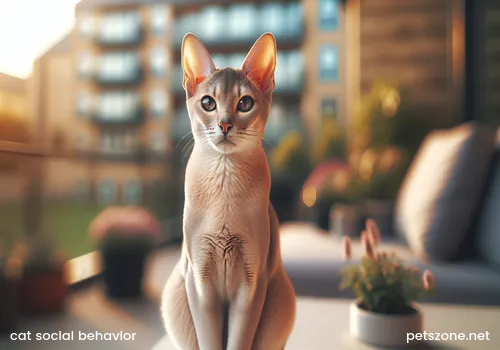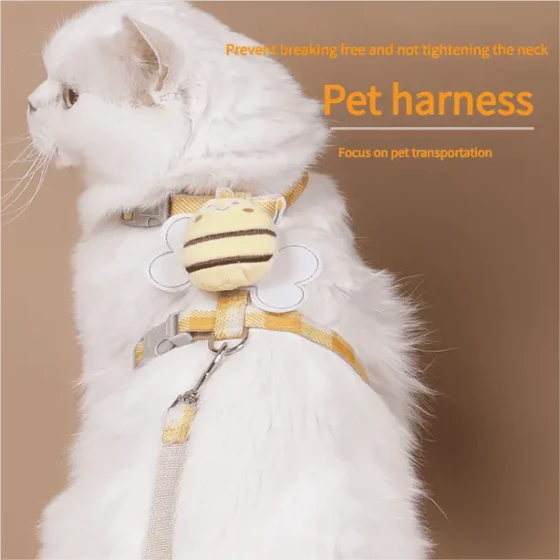Big Cat Pinning Down New Kitten and Biting Neck_Interpreting the True Reasons Behind Cat Social Behavior
When you see the "resident" big cat at home pinning the new kitten under itself, even biting the kitten’s neck, you might feel a jolt of concern, worrying whether they are going to fight or if the big cat is bullying the kitten. Actually, in most cases, this behavior is a natural way for cats to establish social relationships and hierarchy order, usually not a real attack but a form of communication and positioning.

Cat Pinning and Neck Biting: The Code of Social Behavior
Cats, as solitary animals, have a unique way of communication within groups to define relationships and status. When a new member joins, this communication becomes especially important. Pinning and biting the neck, especially the back of the neck (commonly called the "scruff"), is one of the common behavior patterns.
- Establishing Hierarchy: Cats naturally try to establish a social hierarchy. Pinning is a way for the dominant party to show strength and status. By pinning the other down, the dominant cat is saying: "I am stronger, and I have a higher status here."
- Simulating Mother Cat Behavior: A mother cat moves or disciplines her kittens by biting the scruff during kittenhood. This behavior is a signal of submission and safety for kittens. When the big cat does this to the new kitten, sometimes it is mimicking this behavior, especially if the new cat is young, carrying a guiding or restraining meaning.
- Control and Positioning: In some interactions, biting the scruff is a way to control the other’s movement, similar to how male cats behave with females during mating. This helps to immobilize the other and is also a signal of sovereignty and status.
- Defining Personal Space: For resident cats, the arrival of a new member is a potential challenge to their territory and resources. Through this physical contact, the big cat is communicating boundary information to the kitten, helping it understand the current social environment.
Isn't This Fighting? How to Distinguish?
It is crucial to distinguish normal social behavior from true aggressive fighting. Although pinning and neck biting might seem intense, it is usually possible to judge by observing other body language and sounds of the cats.
Social Pinning/Neck Biting (Usually Normal):
- Sounds: Usually accompanied by low-pitched purring or no obvious threatening sounds (such as hissing or screaming).
- Body Language: Relaxed posture, ears forward or in normal position, tail may wiggle slightly or curl. The biting action is usually gentle with no real intent to tear or cause injury. The pinned kitten may make submissive meows or relax its body.
- Duration: Behavior usually does not last long and is brief interaction.
- Outcome: Usually does not cause physical harm.
Aggressive Fighting (Requires Immediate Intervention):
- Sounds: Accompanied by loud hissing, screaming, or growling.
- Body Language: Stiff or puffed-up body, ears flattened back, dilated pupils, showing teeth and claws. Biting is very forceful, involving tearing or scratching. The attacked cat struggles violently, tries to escape, and makes painful or fearful sounds.
- Duration: Fights may last a long time and happen repeatedly.
- Outcome: May cause scratches, bite wounds, or more serious physical injuries.
If the interaction resembles the latter, with persistent threatening sounds, hostile body language, or actual injuries, you need to separate them immediately and adopt more cautious isolation and reintroduction procedures before consulting a pet behaviorist or veterinarian.
How to Help Cats Smoothly Through the Adjustment Period?
Introducing a new cat is a gradual process to help them adapt to each other's presence and reduce potential conflict.
- Separate Zones Isolation: Place the new kitten in a separate room with food, water, litter box, and resting places. Let them sense each other’s presence through cracks in the door or scent.
- Scent Exchange: Swap bedding, toys or scent-laden cloths to familiarize them with each other's smells. You can also wipe both cats with towels and let them smell each other's scent.
- Feeding Across the Door: Place food on both sides of the separation door so they associate the other's scent with a pleasant activity like eating.
- Supervised Short Interactions: After cats show calmness and curiosity, allow brief, positive interactions under supervision. Use treats or toys to divert their attention and let them coexist in a relaxed state.
- Provide Adequate Resources: Ensure enough food bowls, water bowls, litter boxes (usually recommend number of cats + 1), scratching posts, and resting areas to reduce competition for resources.
Remember, every cat is an individual, and their acceptance speed varies. Some may coexist peacefully within days, while others may take weeks or even months. Patience, careful observation of their interaction, and professional help when necessary are keys to ensuring a harmonious relationship.
Frequently Asked Questions
- Q: My two cats often chase and pounce on each other, is this play or fighting?
A: Observe their body language and sounds. If they take turns chasing, move flexibly, do not make threatening sounds, and show no injuries, it's usually play. If there is stiffness, flat ears, hissing, puffed fur, or if one cat looks very scared and evasive, it's fighting. - Q: My resident big cat always hisses at the new kitten, will they never get along?
A: Hissing is a way cats express insecurity or warning. This does not mean they will never get along, just that the resident cat needs more time and space to accept the newcomer. Continue slow, positive introductions and give them time to adjust. - Q: When pinned, the kitten cries out, is it pain?
A: The kitten’s cries when pinned may be fear or submission signals, not necessarily pain. But combined with other signs, if the cries are very sharp or accompanied by struggling and aggressive body language, intervention is needed.
Conclusion
Overall, when you see a big cat pinning and lightly biting the neck of a new kitten, this is usually a normal expression of cats establishing social bonds and order, a form of communication and positioning. However, as an owner, closely observing their overall interaction is crucial. Learning to distinguish normal social behavior from aggressive fights that require intervention, using scientific introduction methods, and staying patient will help your cats build a harmonious and friendly relationship.

-560x560.webp)

